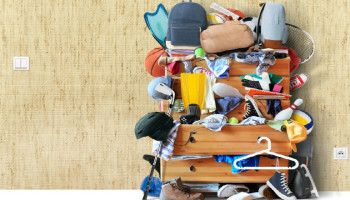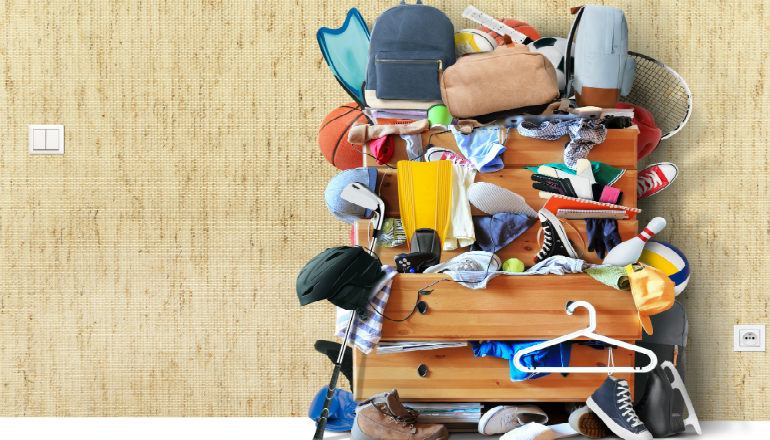 Reading Time: 6 minutes
Reading Time: 6 minutesWhen you walk in the door after a long day at work, what’s the first thing you see?
If your eyes fall on clothes piled on the couch, papers on the dining room table, and dishes in the sink, the mess in your home could be a hidden source of stress, fatigue, or depression.
A 2010 study found that women who described their homes as “cluttered” were more likely to be depressed or fatigued than woman who felt their homes were “restful.” The women with the cluttered homes also had higher levels of the cortisol, the stress hormone.
Messy bedrooms also impact sleep. A study by the National Sleep Foundation discovered that people who made their beds every morning were more likely to report a good night’s sleep. People also reported a better night’s sleep after a night on fresh, clean sheets.
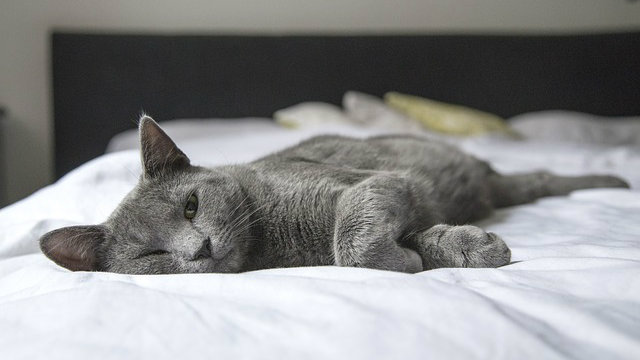
Often, cleaning your house is the last thing you want to do for your mental health. It’s so much more fun to go for a walk or get a massage. The reality is, making your home a calm, stress-free environment is an essential part of improving your mood and overall happiness, so it’s worthwhile to take time to make your home a clean, uncluttered retreat from the outside world.
If you’re having trouble beginning the battle against clutter, our Spring Cleaning Well-Being Practice will give you some structure and motivation to finally tackle those problem areas in your house. But, no matter what time of year it is, if you (and your household) could benefit from some cleaning, here are three strategies to get you started:
1. Try a Capsule Wardrobe
What do you see when you look at your closet? Is it a showcase for beautiful clothes you love to wear, or a crowded space full of tired, outdated, or ill-fitting items?
If it’s the latter, know you aren’t alone. Most people feel overwhelmed by their closets and aren’t sure how to begin getting rid of clothes. But it’s important to keep on top of closet organization to avoid clutter and so you only hang on to clothes that fit well and make you feel good.
I love clothes and enjoy shopping, so I’ve always struggled with crowded closet syndrome. A few years ago, I discovered the concept of the “capsule wardrobe” through Caroline Rector of Unfancy. Caroline started out by reducing her closet to 37 items for each season, rotated every three months.
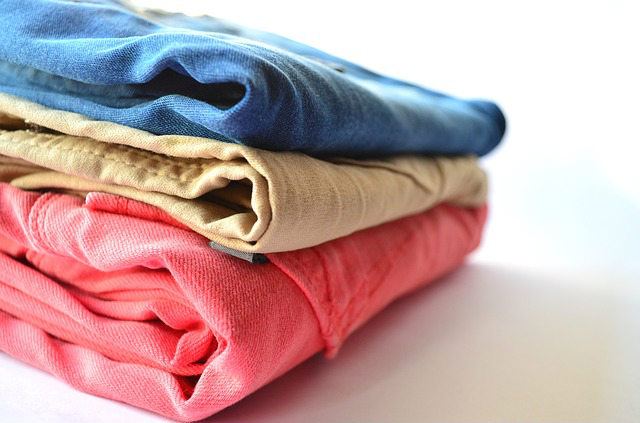
After a few years of that, she’s moved away from such strict rules, but she still uses a minimalist perspective, focusing on quality items she loves, rather than piles of cheap, disposable fashion. Caroline recommends three basic steps when tackling a closet clean-out:
- Empty the entire closet. Take everything out and lay it on your bed.
- Sort the clothes into four piles: First, pick out the clothes you love and would wear right now, and put those back in the closet. Second, take the clothes that aren’t quite right but that you can’t get rid of yet (sentimental reasons, they were expensive, you think you might wear them in the future), and put them in a box and store them in the garage. If you haven’t worn those clothes at the end of the season, get rid of them. Next, identify the clothes you know you won’t ever wear and get rid of them, by either donating or selling them. Finally, if something is completely out of season but you love it, store it in a box under the bed or somewhere nearby.
- Look at what is left, which should be only clothes you love. From these clothes you should be able to get a real sense of your style. Then, Caroline recommends taking a shopping hiatus, and living with what you have for a while. When you finally go shopping, first make a list of what you’re missing and look for pieces that fit your style.
2. De-clutter a Little Every Day
A weekend-long, whole-house purge is incredibly satisfying, and probably a good idea at least once a year, but it’s also time consuming. A much more practical approach to reducing clutter is to fight it every day.
If this sounds dreary and overwhelming, Gretchen Rubin, creator of The Happiness Project, takes this approach: whenever she has a few minutes of down time, she evaluates the nearest shelf, counter, or table and takes a minute to instill order in this small space. She recycles junk mail, puts a book back on the shelf, or throws out spoiled fruit. This approach creates a habit of organization, and the “little bit every day” strategy keeps things from ever getting overwhelming.
These small de-cluttering moments shouldn’t take more than two minutes, but getting in the habit of doing a little organizing every day may cause you to think twice before bringing home items of questionable usefulness.
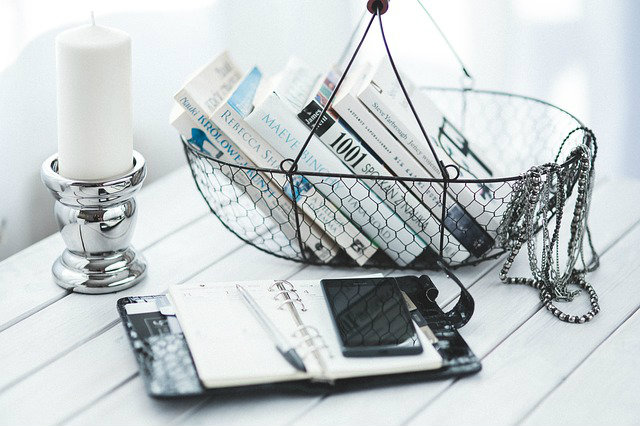
3. Join the Buy Nothing Project
Once you’ve gone through your closet and reduced it to only your favorite clothes and organized the kitchen shelf, what do you do with the clothes or dishes you’re discarding? If you want to do something a bit more personal than driving by the nearest donation drop, consider joining a Buy Nothing group.
The Buy Nothing Project was started in 2013 by two friends, Rebecca Rockefeller and Liesl Clark. Now, there are Buy Nothing groups in twenty countries around the world. The exchanges happen in Facebook groups organized by location and the rules are simple: “Post anything you’d like to give away, lend, or share amongst neighbors. Ask for anything you’d like to receive for free or borrow. Keep it legal. Keep it civil. No buying or selling, no trades or bartering, we’re strictly a gift economy.”
Giving away your things takes a bit more work than driving by a Goodwill, but what you lose in convenience you gain in community and connection. When my kids outgrew their Barbie dream house, I posted it in Buy Nothing, and a mom at the elementary school said she’d love it for her daughter. I recently saw the woman at a school event and she stopped to tell me how much her daughter loves the Barbie house, and how she plays with it constantly. This is the beauty of Buy Nothing groups: I got rid of something we were no longer using, and she got an expensive toy for free.
The Buy Nothing groups are especially good if you struggle with getting rid of things. Somehow, knowing it’s going to someone in the neighborhood, someone who really wants the item, makes it easier to part with something you’ve had trouble discarding.
The Bottom Line: Less Clutter = Less Stress
Whatever you decide to tackle in your spring cleaning practice, don’t think of the time spent fighting clutter as taking you away from your “more important” work. Instead, know that organizing your environment will lead reduced stress, increased productivity, and a fresh perspective.
